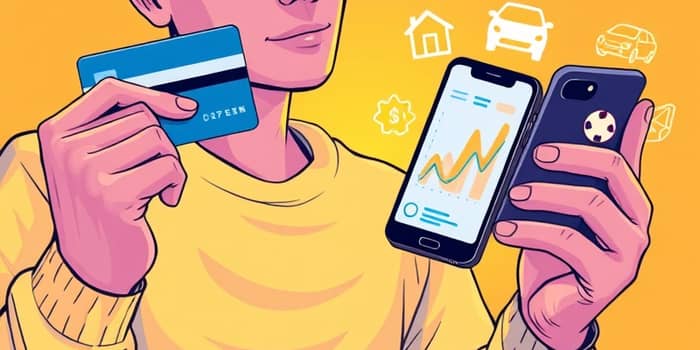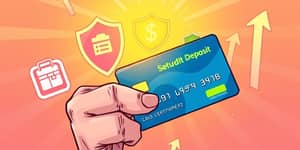In an era of instant payments and digital wallets, credit remains a powerful financial tool when wielded correctly. Misuse, however, can lead to stress and long-term consequences. This guide will inspire you to make confident decisions and offer practical habits for lasting financial health.
Understanding Credit and Its Role
At its core, credit is borrowed money or access to goods with an agreement to pay later. It enables purchases you might not otherwise afford upfront and serves as a safety net for emergencies.
Common forms include credit cards, personal and auto loans, mortgages, lines of credit, and business financing. Each carries its own terms, rates, and fees, so it’s essential to understand the nuances before you borrow.
When used wisely, credit is a stepping stone toward building wealth and achieving goals. It can fund education, home ownership, or strategic business expansions—provided you respect its mechanics.
When to Use Credit
Credit should never be taken lightly. Here are scenarios where borrowing makes sense:
- Essential monthly expenses that you can repay in full by the statement due date, such as groceries and fuel.
- Unplanned emergencies—medical bills or urgent repairs—when you lack sufficient cash on hand.
- Reward-earning credit cards that offer cash back, miles, or points without extra spending.
- Building or improving credit history, especially for young adults or newcomers establishing a record.
- Business cash flow needs and growth initiatives expected to generate returns greater than borrowing costs.
By using credit for strategic purposes, you harness benefits like fraud protection and purchase rewards while strengthening your credit profile.
When Not to Use Credit
Misuse often starts with borrowing for short-term wants or without a plan to repay. Avoid credit in these cases:
- Everyday expenses you cannot cover in full—this leads to compounding interest and spiraling debt.
- Impulse or non-essential purchases that lack a clear repayment timeline.
- When your credit utilization already exceeds 30%, amplifying the risk of score damage.
Recognizing these red flags keeps you from swapping temporary pleasure for long-term burden.
Principles of Wise Credit Use
Experts agree that behavior outweighs raw knowledge. Follow these principles to maintain a strong profile:
- Pay on Time Every Month: Your payment history accounts for approximately 35% of your FICO Score. Late or missed payments can linger on your report for up to seven years.
- Keep Balances Low: Aim for under 30% utilization—ideally below 10%—to signal responsible management.
- Understand Fees and Terms: Review interest rates, late fees, and penalty APRs before signing up.
- Budget Credit Usage: Only charge what you can clear each billing cycle to avoid interest accrual.
- Monitor Regularly: Check your credit reports and scores monthly to catch errors or fraud early.
As Rod Griffin of Experian reminds us, “The 30% level is not a target, but rather is a maximum limit.”
The Mechanics of Credit Management
For individuals and businesses alike, a systematic approach pays dividends:
Define your own credit policy. Decide under what conditions you borrow or extend credit—terms like Net 30 or Net 60 set clear expectations. Use credit scores, payment history, and references to assess risk, whether you’re choosing a card or vetting a business client.
Set up digital alerts for approaching due dates, and automate payments where feasible. Automated reminders and auto-pay setups can cut late payments by up to 50%, according to industry data.
Common Credit Risks & How to Avoid Them
Even seasoned borrowers can fall prey to pitfalls:
- High Utilization: Excessive use of available credit can drop your score significantly.
- Late or Missed Payments: Triggers fees, interest spikes, and score damage.
- Overleveraging: Taking on too many loans or cards strains your budget and cash flow.
- Fraud or Identity Theft: Unauthorized charges or new accounts can ruin your profile if undetected.
Regularly review statements and credit reports to spot anomalies, and freeze accounts immediately if you suspect foul play.
Tools for Smart Credit Management
Technology has transformed proactivity into an everyday habit. Consider these resources:
- Bank and credit card apps with customizable alerts for balance thresholds and upcoming due dates.
- Credit monitoring platforms that track score changes and flag unusual inquiries or new accounts.
- Analytics dashboards for businesses, offering real-time visibility into receivables and exposure.
- Credit insurance or factoring services to transfer the risk of non-payment in commercial transactions.
Leveraging these solutions keeps you one step ahead of potential threats and minimizes manual effort.
Summary at a Glance
Closing Tips for Sustainable Credit Management
Wise credit use is less about the cards in your wallet and more about the mindset you bring. Every swipe, every application, and every statement is an opportunity to build trust with lenders—and, more importantly, with yourself.
Remember Dave Ramsey’s adage: “Personal finance is only 20% head knowledge. It’s 80% behavior!” By adopting consistent habits and informed strategies, you can transform credit from a potential liability into a catalyst for financial growth.
Take charge of your credit journey today. Monitor your reports, harness the power of digital tools, and never borrow beyond your means. With discipline and awareness, credit becomes not a burden, but a stepping stone toward lasting security.
References
- https://bcm.nacm.org/top-10-resolutions-for-credit-managers-goals-to-drive-success-in-2025/
- https://www.powerfi.org/Blog/2025/January/Your-Guide-to-Smart-Credit-Management-in-2025
- https://www.kolleno.com/the-ultimate-guide-to-credit-management-best-practices/
- https://www.creditmanagement-tools.com/blog/2025/02/25/navigating-credit-risks-in-2024-a-wake-up-call-for-credit-managers-b620.php
- https://www.nerdwallet.com/article/finance/30-percent-ideal-credit-utilization-ratio-rule
- https://nuvisionfederal.com/blog/memberresources/2024/11/12/using-credit-wisely
- https://gaviti.com/top-credit-risk-management-tools/










